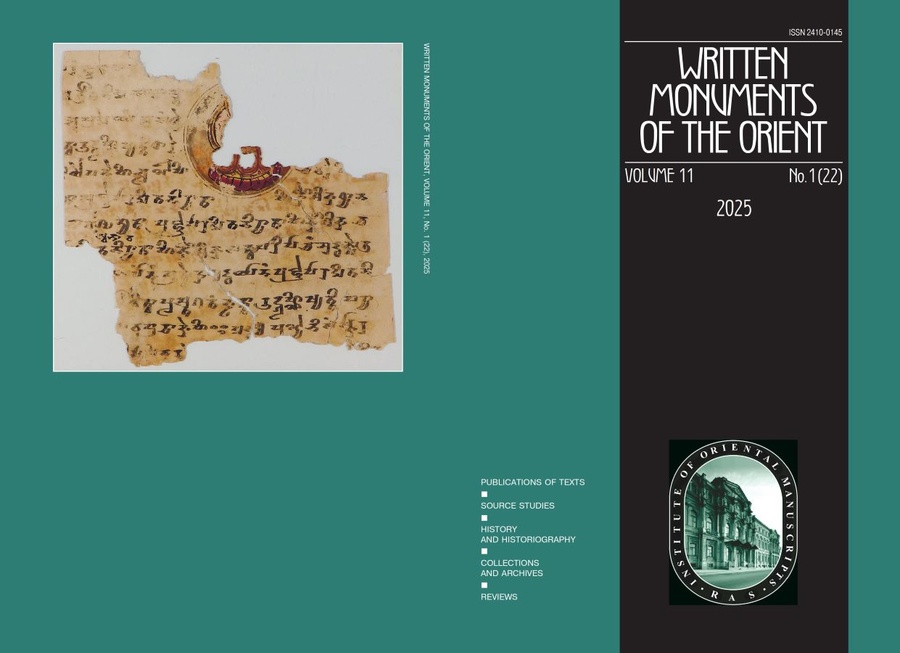Characteristics of the Term Bodhisattva in the Saddhar-mapuṇḍarīka: Bodhi-saTTva vs Bodhi-saTvan
- Authors: Lee Y.1
-
Affiliations:
- Kokoro Institute for Essential Buddhist Studies, Komazawa University
- Issue: Vol 11, No 1 (2025)
- Pages: 25-52
- Section: Articles
- Published: 18.08.2025
- URL: https://journals.eco-vector.com/2410-0145/article/view/682896
- DOI: https://doi.org/10.55512/wmo682896
- ID: 682896
Cite item
Full Text
Abstract
In his Glossary of Dharmarakṣa’s Translation of the Lotus Sutra [Saddharmapuṇḍarīka], Seishi Karashima describes a 開士 (kāi-shì) as “a man, who is on the way to enlightenment”. The term 開士 (kāi-shì) is generally accepted to be an older translation of 菩薩 (pú sà; Bodhisattva). The question remains as to why the words 開士 and 菩薩 are distinguished in Dharmarakṣa’s version, even though both meanings are Bodhisattva. How was a Bodhisattva understood when Dharmarakṣa made his translation in 286 CE? In this study, I will present the characteristics associated with these usages, and examine the differences between Sanskrit manuscripts (Central Asian manuscript SI P/5 and Gilgit manuscript No. 44 in Delhi collection) and manuscripts in other languages, such as Tibetan. Then, I will present my hypothesis that the root of the difference is related to the rendering of Bodhi-saTTva as Bodhi-saTvan.
Keywords
About the authors
Youngsil Lee
Kokoro Institute for Essential Buddhist Studies, Komazawa University
Author for correspondence.
Email: yslee102618@gmail.com
PhD, Researcher
Japan, TokyoReferences
- BROUGH, John 1948: “Legends of Khotan and Nepal.” Bulletin of the School of Oriental and African Studies 12 (2), the University of London: 333–339.
- DAYAL, Har 1932: The Bodhisattva Doctrine in Buddhist Sanskrit Literature. Motilal Banarsidass (Reprint. London, 1970).
- EGGELING, Julius 1882: The Śatapatha Brāhmana: According to the Mādhyandina School,
- Part I. Oxford: Clarendon Press.
- EMMERICK R.E. 1979: A guide to the literature of Khotan. Studia Philologica Buddhica. Occasional Paper Series, III. pp. vii, 62. Tokyo: Reiyukai Library.
- HIRAKAWA, Akira (平川彰) 1968: 初期大乗仏教の研究 (A study of Early Mahāyāna Buddhism). 春秋社 (Shunjusha), Tokyo.
- HIRAKAWA, Akira (平川彰) 1991: 説一切有部の菩薩論 (Bodhisattva Theory of Sarvāstivādin) 原始仏教とアビダルマ仏教 Early Buddhism and Abhidharma buddhism. 春秋社 (Shunjusha), Tokyo.
- KARASHIMA, Seishi (辛嶋静志) 1993: 法華経における乗 (yāna) と智慧 (jñāna): 大乗仏教における yāna の概念の起源について (Yāna and Jñāna in Saddharmapuṇḍarīka-sūtra:
- A Study on the Origin of the Concept of Yāna in Mahāyāna Buddhist Tradition).法華経研究 Hokekyo kenkyu. Vol. 12: 平楽寺書店 (Heirakujisyoten), Kyoto: 137–198.
- KARIYA, Sadahiko (苅谷定彦) 1983: 法華経一仏乗の思想: インド初期大乗仏教研究 <法華経> (Thought of the one buddha vehicle in the Saddharmapuṇḍarika-sūtra: A study of the early mahayana buddhism). Tokyo: 東方出版 (Toho Shuppan).
- MATSUMOTO, Shiro (松本史郎) 2010: 法華経思想論 (Hokekyo shisoron). Tokyo: 大蔵出版 (Okura Shuppan).
- NATTIER, Jan 2008: A Guide to the Earliest Chinese Buddhist Translations. Annual Report of The International Research Institute for Advanced Buddhology at Soka University. Tokyo.
- MAEGAWA, Ken’ichi (前川健一) 2015: 正法華経 薬王如来品 について ― 竺法護編入説の検討を中心に ― “On “Yaowang rulai pin (薬王如来品)” of the Zhengfahua jing (正法華経): Did Dharmaraksa Insert the Story of the Previous Life of Bhaisa-jyarāja 44 Tathāgata into the Lotus Sutra?” 清泉女子大学人文科学研究所紀要. Bulletin of Seisen College Research Institute for Cultural Science 36: 158–148. Tokyo.
- WATANABE, Shoko (渡辺照宏) 1966-71: 詳解・新訳法華経 (Detailed and Newly Trans-lated Lotus Sutra). Tokyo: 大法輪 Daihourin.
- WINDISCH, Ernst 1917: Geschichte der Sanskrit-Philologie und Indischen Altertumskunde. Grundriss der Indo-Arischen Philologie und Altertumskunde. Strassburg.
- YAJIMA, Michihiko 1987: 仏教・インド思想辞典 Dictionary of Buddhism and Indian thought. Edited by Jikidou Takasaki. Tokyo: 春秋社 (Shunjusha).
- ZACCHETTI, Stefano 2005: In Praise of the Light. A Critical Synoptic Edition with an Annotated Translation of Chapters 1–3 of Dharmarakṣa's Guang zan jing, Being the Earliest Chinese Translation of the Larger Prajñāpāramitā. Annual Report of The International Research Institute for Advanced Buddhology at Soka University. Tokyo.
Supplementary files








